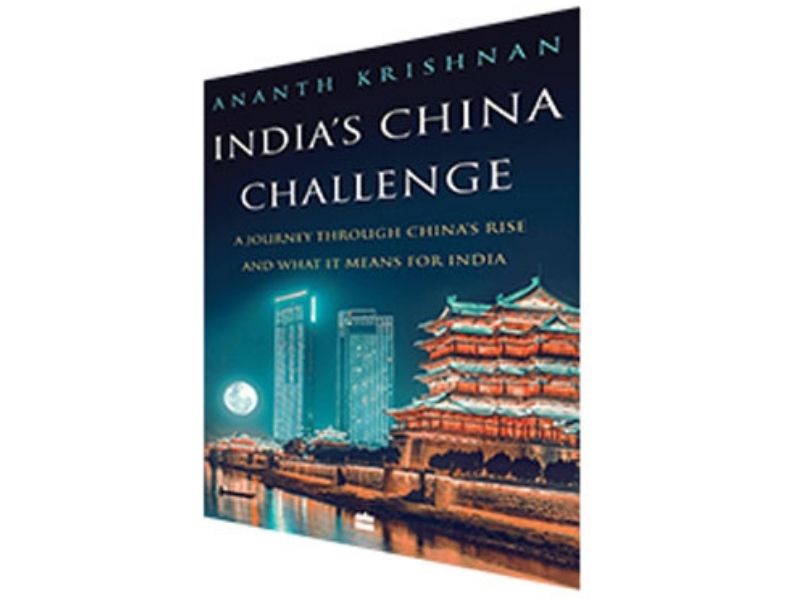
– Dilip Thakore
Right until 1980 the economies of China and India were on a par. This brilliant book details and explains the explosive growth of China and why India is an also ran
India’s China challenge; Ananth Krishnan; Harper Colllins
Rs.417; Pages 420
Every true nationalist with genuine interest in enabling the greater good of the greatest number is certain to experience pain, remorse and anguish while reading this extraordinary narrative. It documents the rise of the People’s Republic of China (PRC) from a struggling third world country suffering recurrent political disorder, famines, humiliating poverty and illiteracy, into the world’s second most economically, educationally and militarily powerful nation. All within the lifetime of the millennial generation.
Consider this: In 1949 when the Republic of China was promulgated by Mao Zedong, chairman of the Communist Party of China (CCP), neighbouring India which had attained political independence from almost two centuries of British rule in 1947, was way ahead of our neighbour nation to the north by north-east on every metric of national development. Newly independent India had dozens of excellent universities, a highly-promising industrial base established by resourceful entrepreneurs including G.D. Birla, JRD Tata, Walchand Hirachand, Ambalal Sarabhai, Kasturbhai Lalbhai and Lala Shri Ram among others, who in the teeth of British opposition had established large industrial conglomerates, poised to flood the national market and Asia with goods and services.
On the other hand China, ravaged by the Japanese invasion of World War II and civil war, was down in the dumps. Worse in the late 1950s, PRC suffered a massive famine precipitated by Chairman Mao’s ill-advised Great Leap Forward project (1958-62), whose objective was overnight transformation of the nation into a steel manufacturing giant. In the devastation that followed, 36 million PRC citizens starved to death.
Right until 1980 — some economists say 1990 — when Deng Xiaoping took charge of PRC’s economic development, the economies of India and China were on a par. The merit of this book, written by Ananth Krishnan, a social sciences postgrad of Chicago University and Beijing-based China correspondent of The Hindu, is that it details and explains PRC’s explosive growth from the time when secretary Deng took charge of the Chinese economy in 1978 to last year. After this era of four decades, China’s annual GDP ($15 trillion) is second only to the US ($21 trillion), while India’s is a distant $3 trillion. Little wonder that modern China is on course to regaining its Middle Kingdom status of the ancient world to which all nations paid homage.
This must-read work is divided into six engrossing chapters — politics which provides a brief political history of PRC from Mao to the rise of incumbent President Xi Ping; economy which narrates the causes and effects of the fantastic growth of China’s GDP, the rise of PRC’s great megacities and its transformation into a technology super-power.
After this the book details the history of Sino-Indian relations starting with India-China Panch Shila bonhomie of the early 1950s during which opportunity to settle demarcation of the 4,000 km Sino-Indian border was neglected; the 1962 border war and ending with the Doklam Plateau (2017) and bloody Galwan skirmish earlier this year. And the concluding chapters discuss the party dictatorship’s imminent challenges with the Muslim population of Xinjiang province, Hong Kong and Taiwan. And finally an engaging last chapter titled ‘portraits’ contradicts the common perception that the Chinese people are a faceless herd of obedient conformists.
Unfortunately time and space constraints of a book review do not permit extensive recitation of the manifold causes and effects of the unprecedented modern China growth story. But its main takeaway is the insight of Huang Yasheng, an economist at the Massachusetts Institute of Technology (USA), cited by Krishnan as observing that China’s post-1980s growth story began “first by dramatically improving agriculture yields and then by starting many small-scale businesses in food-processing and construction materials.” “Where did the government of such a low-income country get the money to finance all this impressive urban infrastructure? The answer: rural China,” says Huang who explains that the seeds of modern China’s sustained 10 percent plus rate of annual GDP growth was driven by millions of Township and Village Enterprises (TVEs).
Obviously this burst of entrepreneurial activity wouldn’t have been possible without development of the country’s human capital. “As early as 1965 China boasted better education and longer life expectancy for its citizens than India did, which has been suggested as one reason why many Chinese in the countryside turned to entrepreneurship in the 1980s, while only a few in India did,” writes Krishnan.
To the great misfortune of our equally entrepreneurial nation, post-liberalisation India failed to jettison its disabling socialist dogma. It did too little for rural development and criminally neglected public primary education, which is why within three decades it has been decisively outrun and reduced to also-ran status by our northern neighbour which is now set to settle old border-related scores.
This is a brilliant book written in engaging journalistic style and packed with expert opinion and data. Its only drawback is the absence of cartographic maps and omission of a subjects index. But that’s the fault of the publishers, rather than of this book’s energetic and erudite author.























